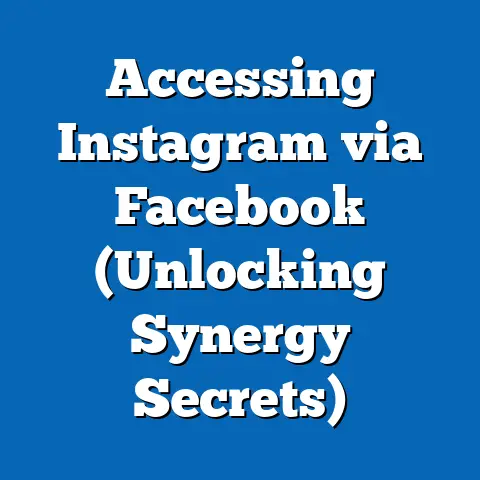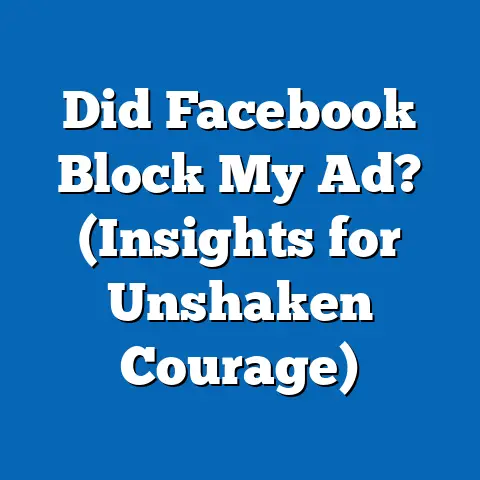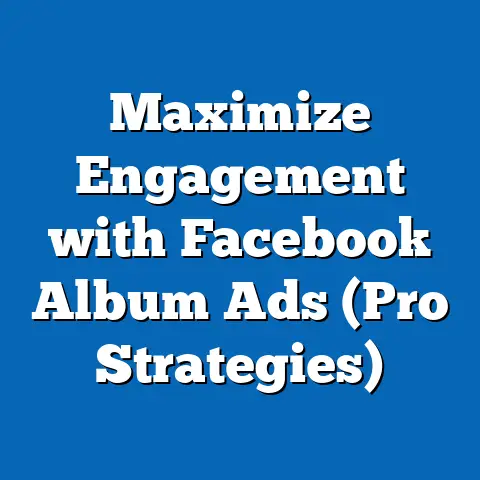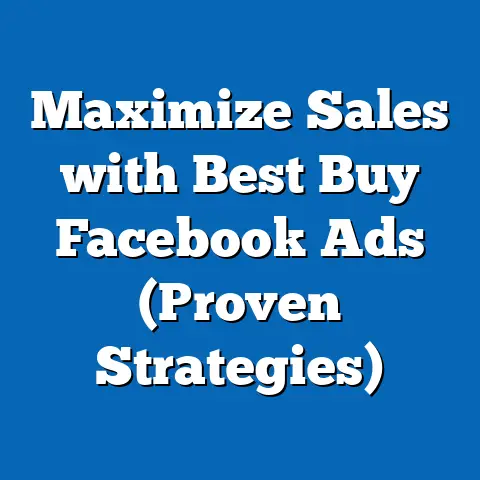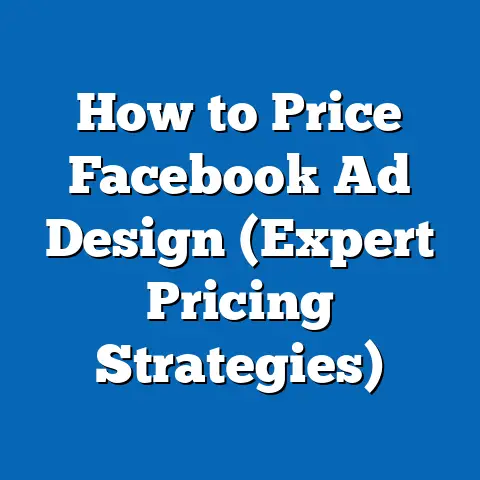Transform Facebook Page Like Ads in 2025 (Proven Strategies)
In the ever-shifting landscape of digital marketing, few platforms have maintained as much relevance and adaptability as Facebook. As we approach 2025, the significance of Facebook Page Like Ads—a tool designed to grow a brand’s audience by encouraging users to “like” a business page—remains a cornerstone of social media strategy. However, the trends, technologies, and user behaviors shaping these ads have evolved dramatically, necessitating a fresh approach to maximize their effectiveness.
Section 1: Trends Shaping Facebook Page Like Ads in 2025
1.1 The Rise of Hyper-Personalization and AI-Driven Targeting
One of the most defining characteristics of digital advertising in 2025 is the unprecedented level of personalization enabled by artificial intelligence (AI). Facebook’s algorithms have become increasingly sophisticated, leveraging vast datasets to predict user preferences with remarkable accuracy. According to a 2023 study by eMarketer, 78% of marketers reported improved ROI when using AI-driven ad targeting, a trend expected to intensify by 2025.
This hyper-personalization means that Page Like Ads are no longer a one-size-fits-all approach. Instead, they are tailored to individual interests, behaviors, and even real-time emotional states inferred from user activity. For instance, ads might dynamically adjust messaging based on whether a user is browsing for leisure or seeking professional content.
1.2 The Shift Toward Authenticity and Community Building
Another key trend is the growing demand for authenticity in brand interactions. As users become wary of overt marketing tactics, they gravitate toward brands that foster genuine connections. A 2024 survey by Sprout Social found that 64% of consumers value brands that engage in meaningful dialogue over those pushing sales-driven content.
For Page Like Ads, this translates to a focus on community-building rather than mere follower accumulation. Ads in 2025 are likely to emphasize shared values, user-generated content, and interactive elements like polls or live events to encourage organic engagement.
1.3 The Impact of Privacy Regulations and Data Limitations
The tightening of privacy regulations, such as the European Union’s General Data Protection Regulation (GDPR) and California’s Consumer Privacy Act (CCPA), has reshaped the digital advertising landscape. Apple’s App Tracking Transparency (ATT) framework, introduced in 2021, further limited third-party data collection, a challenge that persists into 2025. These changes have forced marketers to pivot toward first-party data and contextual advertising.
For Facebook Page Like Ads, this means a greater reliance on organic reach and creative storytelling to attract likes, as targeting precision faces constraints. Marketers must adapt by crafting ads that resonate on a cultural or emotional level without depending heavily on invasive data practices.
1.4 The Role of Emerging Technologies: AR and VR Integration
Augmented Reality (AR) and Virtual Reality (VR) are no longer futuristic concepts but tangible tools for engagement in 2025. Facebook’s parent company, Meta, has heavily invested in the Metaverse, integrating immersive experiences into advertising formats. Page Like Ads may now include AR filters or VR previews that allow users to interact with a brand in a virtual space before liking the page.
This trend reflects a broader societal shift toward experiential marketing, where users seek memorable, interactive encounters over static content. Early adopters of AR/VR in ads have reported a 30% higher engagement rate, per a 2023 Meta report, signaling a promising frontier for Page Like campaigns.
Section 2: Historical Context of Facebook Page Like Ads
2.1 The Birth of Social Media Advertising
Facebook launched its advertising platform in 2007 with the introduction of “Flyers,” a rudimentary ad format. The concept of Page Like Ads emerged shortly after as businesses sought to build online communities on the platform. These early ads were simple, often consisting of a basic image and a call-to-action (CTA) to like a page for updates or promotions.
The late 2000s and early 2010s were marked by rapid user growth on Facebook, with the platform surpassing 1 billion active users by 2012. This era saw businesses prioritizing follower counts as a metric of success, often equating likes to brand loyalty—a notion that has since been challenged.
2.2 Key Milestones and Algorithm Shifts
Significant events shaped the evolution of Page Like Ads over the years. In 2014, Facebook’s algorithm began prioritizing content from friends and family over brand posts, drastically reducing organic reach. This shift forced businesses to invest more heavily in paid ads to maintain visibility, including Page Like campaigns.
By 2018, privacy scandals like Cambridge Analytica highlighted the risks of data misuse, prompting Facebook to overhaul its ad targeting policies. These changes, coupled with the 2021 iOS update limiting tracking, marked a turning point for how Page Like Ads were designed and measured.
2.3 Generational Influences on Ad Perception
The historical context of Page Like Ads cannot be divorced from generational dynamics. Millennials (born 1981-1996), who came of age during Facebook’s rise, were the first to embrace social media marketing, often responding to aspirational and trend-driven content. Gen Z (born 1997-2012), however, grew up in a more saturated digital environment, showing skepticism toward overt advertising and valuing transparency.
As we move into 2025, the emerging Gen Alpha (born 2013 onward) will begin influencing trends, bringing an even deeper integration of technology into daily life. Understanding these generational shifts is crucial for crafting Page Like Ads that resonate across diverse audiences.
Section 3: Societal Implications of Evolving Page Like Ads
3.1 Economic Impacts: Cost and Accessibility
The evolution of Facebook Page Like Ads has significant economic implications for businesses of all sizes. While advanced targeting and immersive technologies offer greater engagement potential, they also increase the cost of ad creation and placement. Small businesses, in particular, may struggle to compete with larger brands that can afford AR/VR integrations or premium ad slots.
Conversely, the democratization of AI tools and Meta’s ongoing efforts to simplify ad creation could level the playing field by 2025. This duality reflects broader societal tensions between innovation and accessibility in the digital economy.
3.2 Cultural Shifts: Redefining Brand-Consumer Relationships
Page Like Ads in 2025 are not just about numbers; they symbolize a cultural shift in how brands and consumers interact. The emphasis on community and authenticity mirrors a societal desire for connection in an increasingly fragmented world. Brands that succeed with these ads are those that position themselves as partners or advocates rather than mere sellers.
This trend also raises questions about cultural representation in ads. With diverse audiences on Facebook, marketers must ensure that campaigns reflect varied identities and experiences, avoiding tokenism or stereotyping.
3.3 Privacy and Ethical Concerns
Marketers must navigate these concerns by prioritizing transparency, such as clearly disclosing data usage in ad copy or offering opt-out options. This ethical responsibility is not just a legal necessity but a societal expectation in 2025.
3.4 Workplace Dynamics: Skills and Adaptation
The transformation of Page Like Ads also impacts workplace dynamics within marketing teams. The demand for skills in AI, data analytics, and immersive tech is reshaping job roles, with a 2024 LinkedIn report noting a 40% increase in demand for digital marketing specialists familiar with AR/VR tools.
This shift may create generational divides in the workplace, as younger professionals adapt more readily to emerging technologies. Organizations must invest in upskilling to bridge these gaps, ensuring that teams can effectively execute modern Page Like campaigns.
Section 4: Proven Strategies for Transforming Facebook Page Like Ads in 2025
4.1 Leverage AI for Micro-Targeting and Dynamic Content
AI remains a game-changer for Page Like Ads, enabling micro-targeting that goes beyond demographics to psychographics and behavioral patterns. Marketers should use AI tools to segment audiences into niche groups, delivering tailored messages that resonate deeply. For example, a fitness brand might target yoga enthusiasts with serene imagery while appealing to weightlifters with high-energy visuals.
Dynamic content—ads that adapt in real-time based on user interactions—can further boost engagement. A 2023 study by HubSpot found that dynamic ads increased click-through rates by 25%, a tactic that will be even more effective with 2025’s advanced algorithms.
4.2 Focus on Storytelling and Value-Driven Messaging
Rather than pushing for likes outright, brands should use storytelling to create emotional connections. Ads that highlight a brand’s mission, showcase customer testimonials, or address societal issues tend to perform better in fostering loyalty. For instance, a sustainable clothing brand might share a video of its eco-friendly production process, inviting users to join a movement by liking the page.
Value-driven messaging aligns with the societal push for authenticity, ensuring that ads feel less transactional and more relational. This approach is particularly effective with Gen Z and Millennials, who prioritize brands with purpose.
4.3 Incorporate Interactive and Immersive Elements
With AR and VR becoming mainstream by 2025, Page Like Ads should incorporate interactive elements to stand out. Imagine an ad for a travel agency that lets users explore a virtual beach destination using an AR filter, prompting them to like the page for more experiences. Such campaigns not only drive engagement but also create memorable brand interactions.
Marketers should start small, testing AR features like branded filters before scaling to full VR experiences. Meta’s Creator Studio offers accessible tools for integrating these technologies without exorbitant costs.
4.4 Build Communities, Not Just Follower Counts
The days of chasing vanity metrics are over. In 2025, successful Page Like Ads focus on building engaged communities rather than inflating numbers. This means encouraging likes as a gateway to deeper interaction, such as joining group discussions, participating in live Q&As, or contributing user-generated content.
A practical step is to pair ads with post-like engagement tactics, like asking followers to comment on their experiences or share ideas. This fosters a sense of belonging, turning casual likers into active advocates.
4.5 Optimize for Mobile and Short-Form Content
With over 90% of Facebook users accessing the platform via mobile devices (Statista, 2023), Page Like Ads must be optimized for smaller screens and shorter attention spans. Vertical videos, bold visuals, and concise copy are essential to capture interest within the first three seconds. Short-form content, inspired by platforms like TikTok, can be adapted for Facebook to drive quick, impactful engagement.
Testing different formats—such as carousel ads, Stories, or Reels—can help identify what resonates best with target audiences. The key is to prioritize speed and clarity over complexity.
4.6 Navigate Privacy Constraints with Contextual Creativity
Given ongoing privacy limitations, marketers must lean on contextual advertising—placing ads in relevant environments without relying on personal data. For Page Like Ads, this could mean targeting users based on the content they’re engaging with, such as placing a pet supply ad in pet-related groups or posts.
Creativity is critical here; ads should blend seamlessly into the user’s feed, feeling like a natural extension of their interests. This approach not only circumvents data restrictions but also builds trust by respecting user boundaries.
4.7 Measure Success Beyond Likes
Finally, redefine success metrics for Page Like Ads in 2025. While likes remain important, deeper indicators of engagement—such as comments, shares, and time spent on the page—offer a clearer picture of impact. Tools like Facebook Insights and third-party analytics platforms can track these metrics, helping marketers adjust strategies in real-time.
Additionally, consider long-term outcomes, such as how many likers convert to customers or participate in community activities. A holistic measurement approach ensures that campaigns deliver sustainable value.
Section 5: Generational Nuances in Page Like Ad Strategies
5.1 Tailoring to Millennials: Nostalgia and Aspiration
Millennials, now in their late 20s to early 40s, value nostalgia and aspirational content. Page Like Ads targeting this group might reference cultural touchstones from the 2000s or emphasize personal growth and achievement. For example, a financial services brand could use imagery of “dream homes” to evoke both nostalgia and future goals.
However, Millennials are diverse, spanning different life stages and economic realities. Ads must avoid overgeneralizations, offering varied messaging for young parents versus single professionals.
5.2 Engaging Gen Z: Authenticity and Social Impact
Gen Z prioritizes authenticity and social impact, often rejecting polished or overly corporate ads. Page Like campaigns for this demographic should highlight real stories, diversity, and causes they care about, such as climate change or mental health. A brand might collaborate with Gen Z influencers to co-create ad content, ensuring relatability.
This generation’s digital savviness also means they’re quick to spot inauthenticity. Transparency in messaging and intent is non-negotiable to win their trust.
5.3 Reaching Gen Alpha: Playful and Tech-Forward
Though still young, Gen Alpha’s early adopters (pre-teens by 2025) are beginning to influence family purchasing decisions and engage with social media under supervision. Page Like Ads for this group—or their parents—should be playful, colorful, and tech-forward, often integrating gamification or AR elements. Think of a toy brand offering a virtual “try before you buy” experience.
Parental gatekeeping remains a factor, so ads must balance child appeal with adult trust, ensuring safety and value are evident.
5.4 Bridging Generational Gaps
While tailoring to specific generations is crucial, cross-generational appeal can amplify reach. Ads that focus on universal themes—family, humor, or shared challenges—can resonate across age groups. Testing multi-generational campaigns, such as a holiday-themed ad uniting grandparents and grandchildren, can reveal untapped potential.
The key is to acknowledge diversity within and between generations, ensuring that no group feels alienated or stereotyped.
Section 6: Broader Implications Across Domains
6.1 Society and Culture: Shaping Digital Interactions
The transformation of Page Like Ads reflects and reinforces societal trends in digital interaction. As ads become more interactive and community-focused, they contribute to a culture of participation over passive consumption. This shift could redefine social media’s role from a mere content platform to a hub of meaningful exchange.
However, it also risks deepening digital divides, as not all users or businesses can access cutting-edge ad tools. Addressing this inequity will be a societal challenge in 2025 and beyond.
6.2 Workplace: Evolving Marketing Roles
As noted earlier, the skills required for Page Like Ads are changing the marketing landscape. Beyond technical expertise, soft skills like empathy and cultural awareness are vital for crafting resonant campaigns. Companies must foster interdisciplinary teams that blend data scientists, creatives, and strategists to stay competitive.
This evolution may also influence workplace culture, with younger generations pushing for flexible, tech-savvy environments while older workers seek stability. Balancing these dynamics will be key to innovation.
6.3 Technology: Accelerating Innovation
The integration of AR, VR, and AI in Page Like Ads is accelerating technological innovation within marketing. Meta’s investments in the Metaverse, alongside competitors’ advancements, suggest that immersive advertising will become a norm by the late 2020s. This rapid pace challenges marketers to stay ahead of the curve while managing costs and ethical concerns.
Moreover, tech advancements could democratize ad creation, empowering smaller brands to compete through accessible tools. The tension between innovation and equity will shape tech’s role in advertising.
6.4 Economy: Redefining Marketing Budgets
Economically, the shift in Page Like Ads impacts how businesses allocate marketing budgets. High-tech campaigns may demand greater upfront investment, but their potential for higher engagement could justify the cost. Conversely, privacy constraints might reduce ad spend efficiency, pushing brands toward organic growth strategies.
Small and medium enterprises (SMEs) face unique pressures, as they balance limited resources with the need to stay relevant. Economic policies supporting digital literacy and tech access could mitigate these disparities.
Conclusion: Looking Ahead to 2025 and Beyond
As we approach 2025, transforming Facebook Page Like Ads requires a blend of innovation, adaptability, and ethical consideration. The trends of hyper-personalization, authenticity, privacy constraints, and immersive technologies are reshaping how brands connect with audiences, demanding strategies that prioritize engagement over mere metrics. By leveraging AI, storytelling, and interactive content, marketers can build communities that transcend generational and cultural divides.
Yet, uncertainties remain. The pace of technological change, evolving user expectations, and regulatory landscapes could introduce unforeseen challenges. Will the Metaverse fully integrate into mainstream advertising by 2025, or will privacy concerns slow its adoption? How will economic disparities influence access to cutting-edge tools?
Forward-looking insights suggest that success will hinge on flexibility—staying attuned to societal shifts, generational nuances, and technological breakthroughs. Marketers must also commit to ethical practices, ensuring that Page Like Ads foster trust rather than skepticism. As the digital landscape continues to evolve, the brands that thrive will be those that view likes not as an endpoint, but as the beginning of a deeper, more meaningful relationship with their audience.
This comprehensive analysis, spanning historical context to future implications, underscores the complexity and potential of Facebook Page Like Ads in 2025. By embracing proven strategies and remaining vigilant to change, businesses can navigate this dynamic terrain with confidence and impact.

